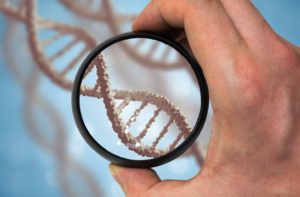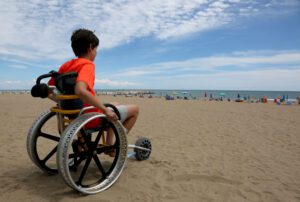Muscular Dystrophy
What is muscular dystrophy?
Muscular dystrophy is a group of diseases that are all characterized by the progressive loss of muscle mass and muscle weakness. Mutations disrupt the normal function of proteins that are necessary to form healthy muscles.
There are multiple forms of this disease, such as Duchenne, which is the most common type, Becker, myotonic, congenital, limb-girdle, and facioscapulohumeral.
What are the symptoms of muscular dystrophy?
Symptoms and onset of muscular dystrophy can vary depending on the type one has, but the main effect of the disease is the progressive weakness of muscles.
Duchenne muscular dystrophy includes these symptoms:
- Frequent falling
- Difficulty getting up after sitting or laying down
- Trouble running and jumping
- Waddling gait
- Walking on the toes
- Large calf muscles
- Muscle pain and stiffness
- Learning disabilities
While Becker muscular dystrophy is similar to Duchenne, it has a later onset and slower progression of symptoms. Other types of this disease are defined by one specific symptom or where in the body symptoms begin.
There are several complications that may arise from this disease. People may have trouble walking, contractures, breathing problems, scoliosis, heart issues, and problems with swallowing.
What causes muscular dystrophy?
All types of this disease are the result of a defect in one of the genes that protect muscle fibers from destruction, but they differ in which specific gene is mutated. While sometimes muscular dystrophy is inherited in an X-linked recessive pattern, other times the mutation is sporadic.
How is muscular dystrophy diagnosed?
A physical evaluation and examination of medical history are the first steps in obtaining a diagnosis. The next steps may be one of many tests, such as enzyme tests, electromyography, genetic testing, muscle biopsies, heart-monitoring tests, and lung-monitoring tests.
What are the treatments for muscular dystrophy?
There are no cures for any of the types of this disease, but there are options that can help to maintain mobility. Physical and occupational therapy can help to strengthen the muscles. Braces and other mobility aids may also help. Medications like eteplirsen, corticosteroids, and heart medications may be prescribed. If scoliosis makes breathing difficult, surgery can be performed to correct it.
Where can I find out more about muscular dystrophy?
Muscular Dystrophy Articles

Gene Therapy Led to “Robust Microdystrophin Expression” in Duchenne Muscular Dystrophy Patient

Duvyzat (givinostat) Now FDA-Approved for Duchenne Muscular Dystrophy (DMD)

PGN-EDO51 Granted Orphan Drug Designation for Duchenne Muscular Dystrophy (DMD)



The FDA Approves Agamree for Duchenne Muscular Dystrophy








